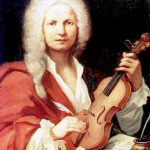What enhances the aural appeal – Words or Music?
Written by : Chitra Sri Krishna
I’ve always believed that music transcends boundaries—of culture, language and religion. Which is why Pavarotti singing Verdi’s Rigoletto moved me despite my utter ignorance of the Italian language. Any of us who’ve been to lms would have experienced our eyes tearing up when a somnolent violin accompanies the heroine’s break-up. Even a lone instrument playing with nary a beat is enough to set our feelings atwitter.
When such music is set to even a simple rhythmic beat, it can trigger emotions. It is the beat in a Tamil or Hindi song that makes people dance, even if they don’t understand the lyrics. When I began learning Carnatic music as a child, rarely did my teachers stop to explain the meanings for either Tyagaraja’s Telugu songs or Purandaradasa’s Kannada songs. Even the Tamil songs were o ten in lowery and formal language and not in the simple vernacular spoken at home. It was, however, the ragas — a Sahana or a Simhendramadhyamam — that held me rapt.
My teacher, the late Seetalakshmi Venkatesan, introduced me to the vachanas of the Kannada mystics Akka Mahadevi and Basavanna. As a Tamil speaker, understanding the vachanas was not easy, but over time as I began to understand these works, it began re lecting in the joy I experienced while singing or teaching them. My husband’s epiphany with Bharatidasan’s ‘Thunbam Nergayil’ brought me back to considering what role lyrics play in enriching the listening experience of Indian music.
Role of lyrics
Folk music pre-dates all classical forms and it’s interesting to look at the role lyrics play there. With their refrains, many folk songs encourage us to sing along, helping foster a sense of community and forget the realities of everyday life. The poignant ‘Mee Dolkar’, a Marathi song of the Koli shing community, compares the sea to a lover waiting impatiently for her partner. The quirky ‘Sasural Genda Phool’ from Chhattisgarh describes a new bride adjusting to her various in-laws.
While folk songs mirror the daily lives of people, ghazals o ten dwell on memories. The famous ‘Chupke Chupke Raat Din’ written by Maulana Hasrat Mohani and popularised by Ghulam Ali describes a love a fair, the heartache of missing a beloved, and the encounter between the lovers. The words tug at one’s heartstrings and Ali’s sensitive rendition adds to the allure. Tyagaraja wrote his songs in emotive and accessible Telugu, mostly in rst person. His songs re lect his state of mind whether it is grief (‘Endhudhaaginaado’), yearning (‘Tera tiyaga radha’) or joy (‘Intha Kannananda’). And his vast repertoire has diverse lyrical content and context—from simple songs to the complex Pancharatna kritis. In Hindustani music, the lyrics or bandish are looked at primarily from the lens of improvisation of melody and rhythm. The lines, usually two to eight, are paeans to gods and royal patrons or describe emotions or nature. The popular ‘Aeri Aali Piya Bina’ re lects a lovelorn woman’s state of mind while ‘Tu Hain Malik Mera’ is a call to the divine.
More laidback
While classical music is bound by rules of grammar, the lyricists for lms have greater laissez faire. When ‘Kolaveri Di’ became a hit, it took many by surprise, but predictably, it revived the widely-held notion that lyrics were being short-changed by an excessive focus on melody and rhythm. Yet, without lyrics how do instrumentalists recreate a similar magic? Words, their power to move notwithstanding, can sometimes get in the way of our own imagination — as we’ve seen with many lms, poorly adapted from books. Listening to instrumental music, however, gives the listener the freedom to imagine the lyrics on a blank slate.
But, as my husband discovered, the power of lyrics is indeed transcendental. Bharatidasan wrote ‘Thunbam Nergayil’, a poem about how the travails of our lives can be lessened by Tamil poetry, song, dance and wisdom. The lyric was set to tune in ragam Desh by the poet’s friend Dandapani Desigar, enhancing the charm of the work. And Sanjay Subrahmanyam’s emotive rendition brought these lyrics to life in a manner that reinforced the magic of the words.
Ms. Chitra Sai Krishna is Bengaluru-based writer is a Carnatic musician.
https://chitrasrikrishna.com/2020/10/09/what-enhances-the-aural-appeal-my-article-in-the-hindu/



